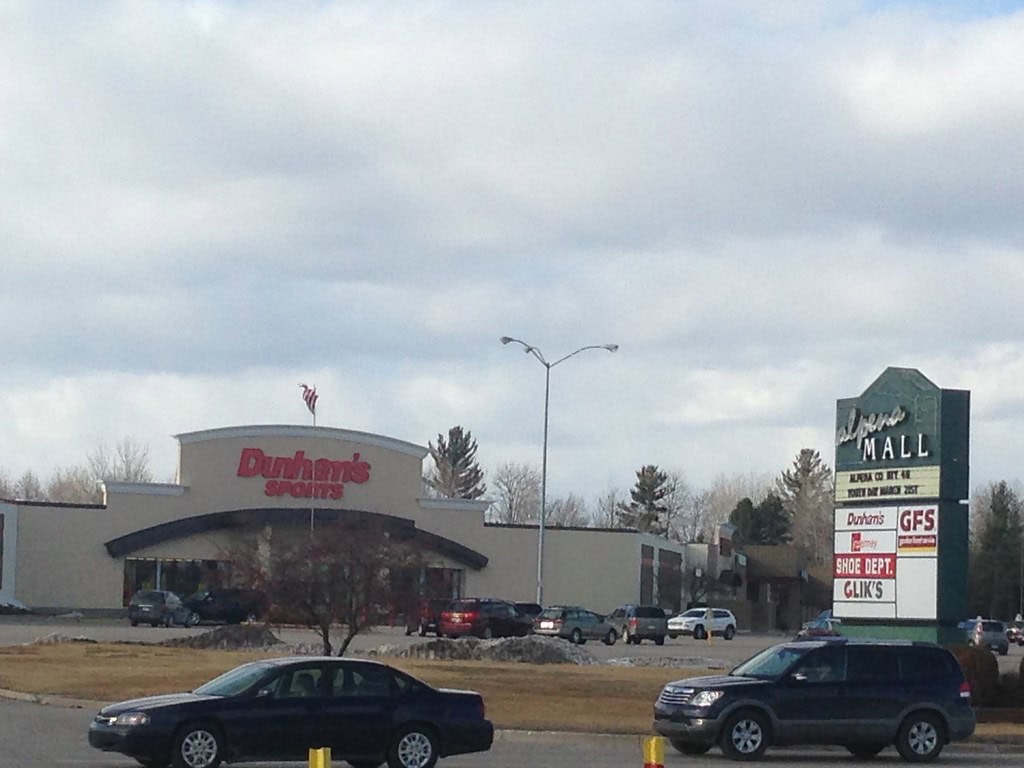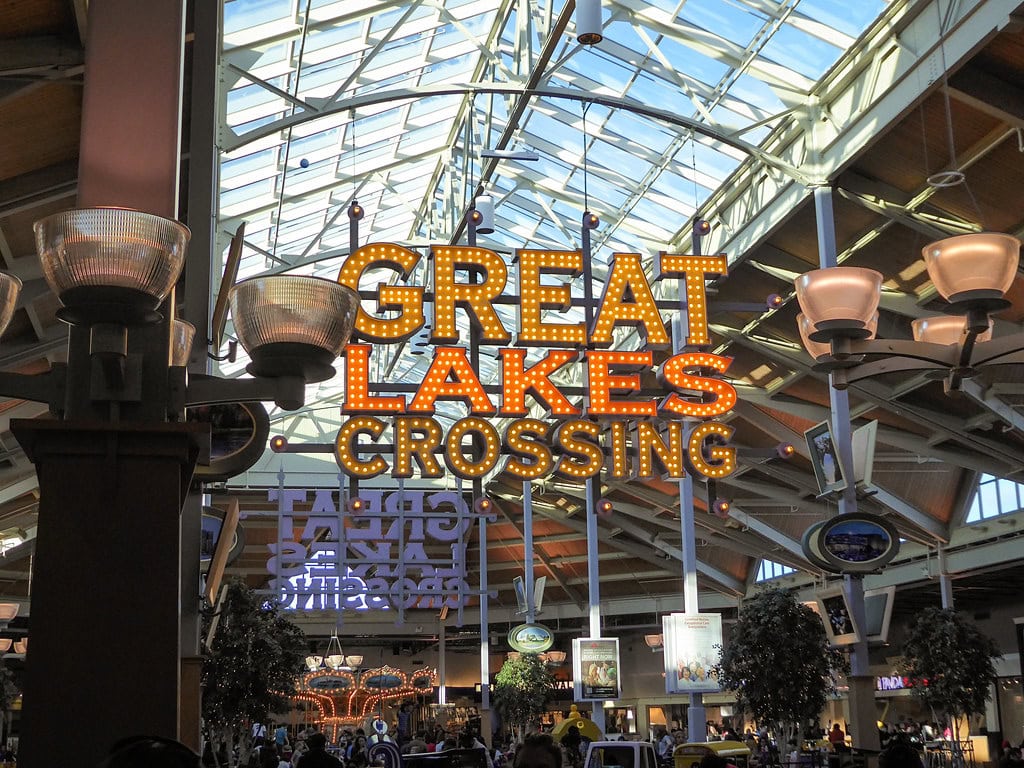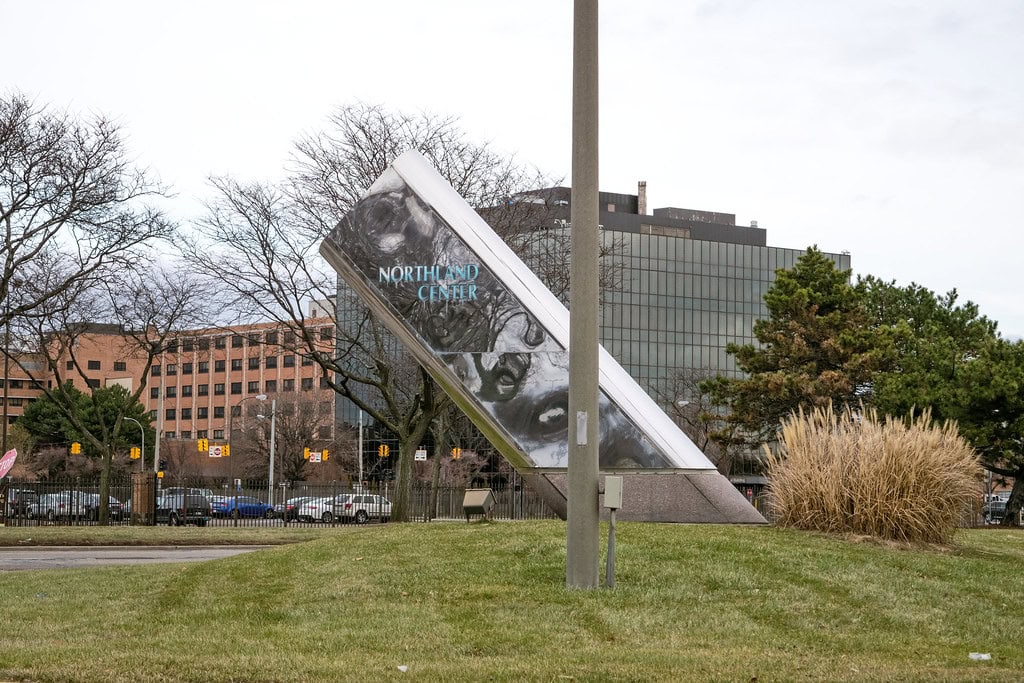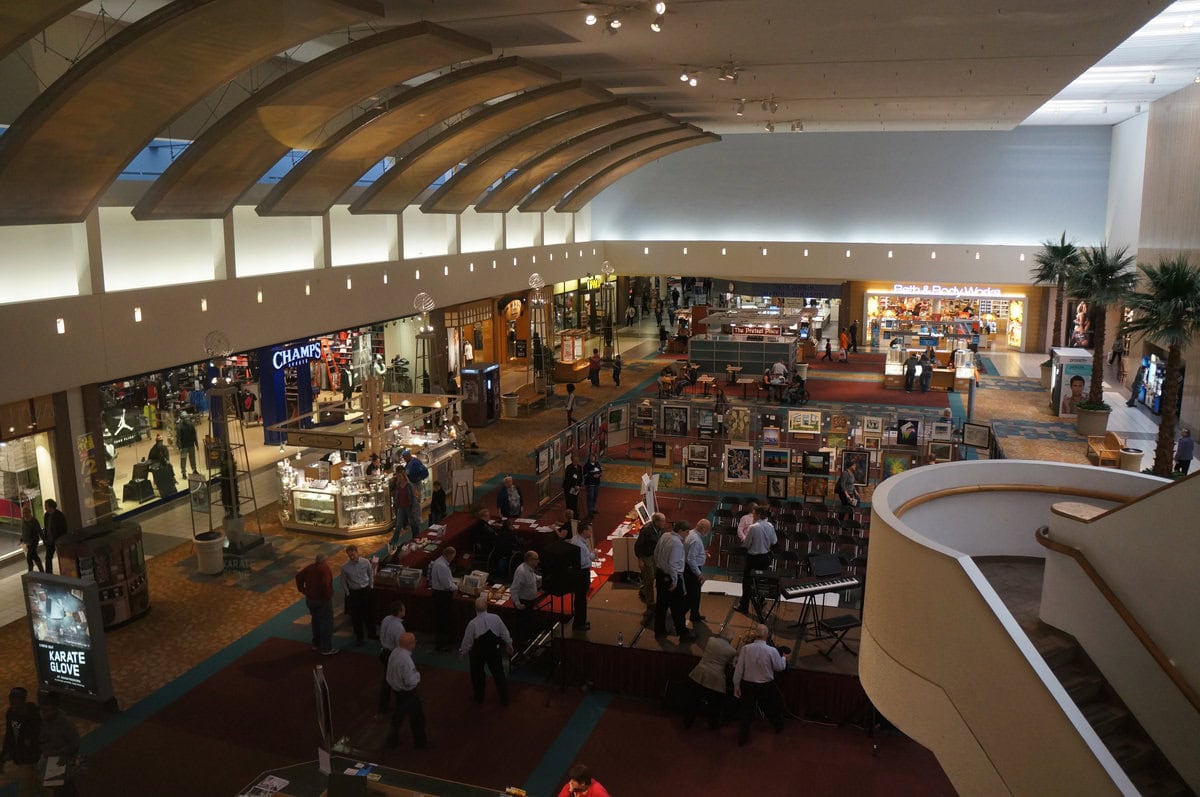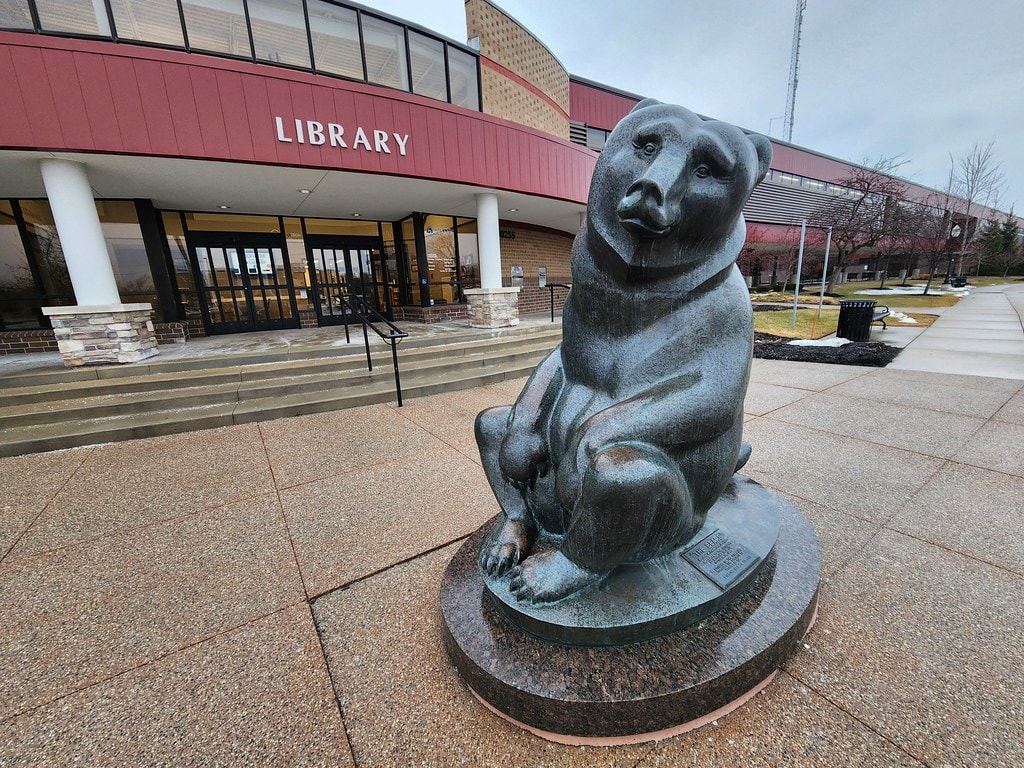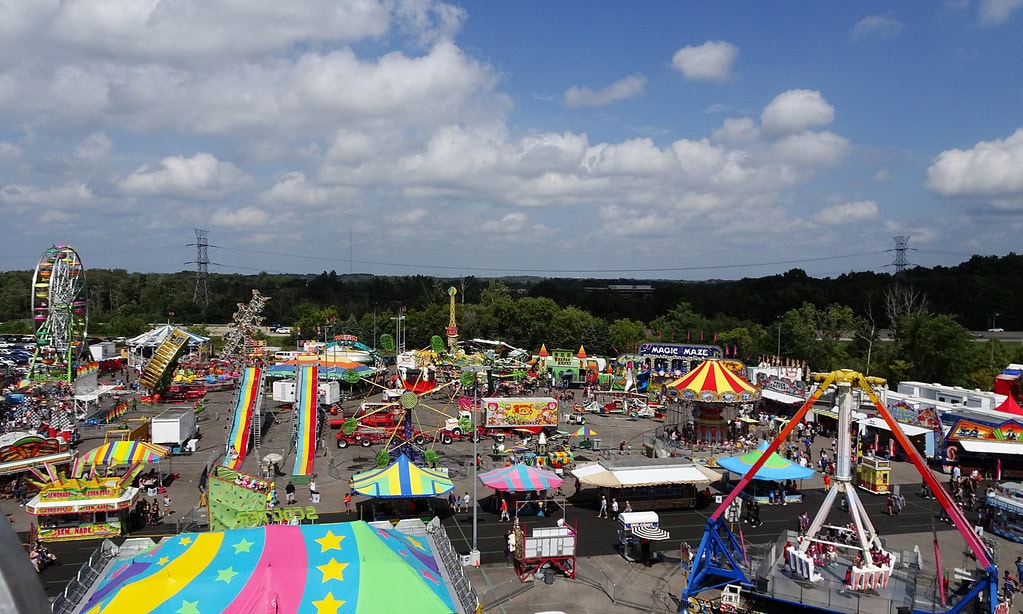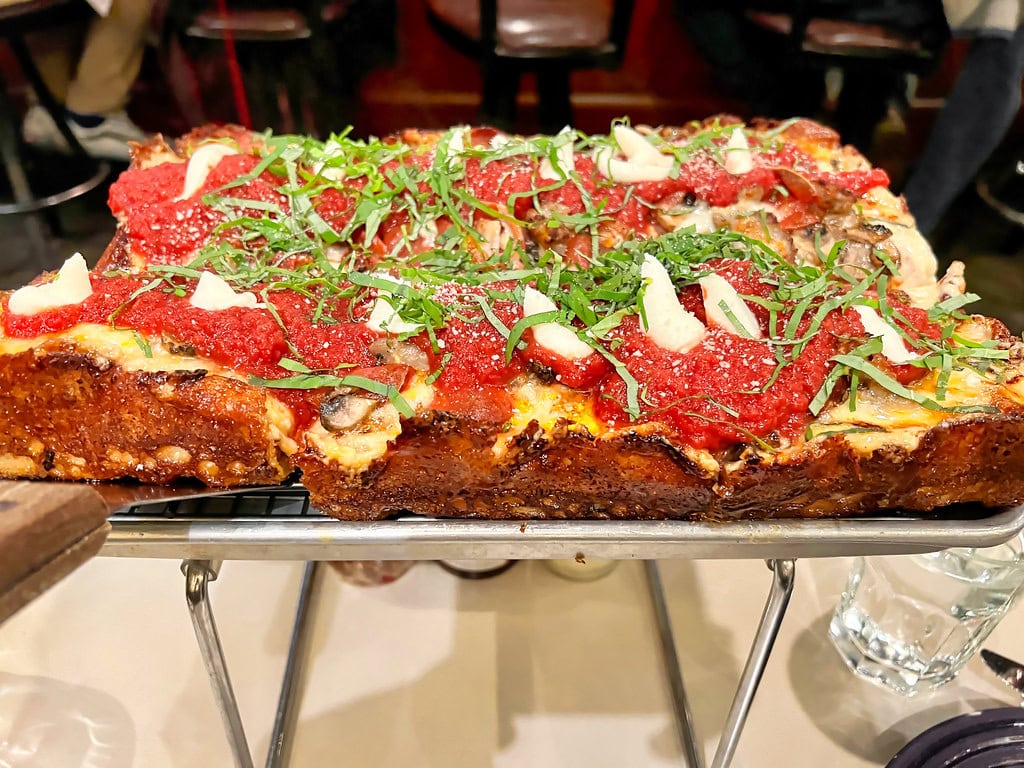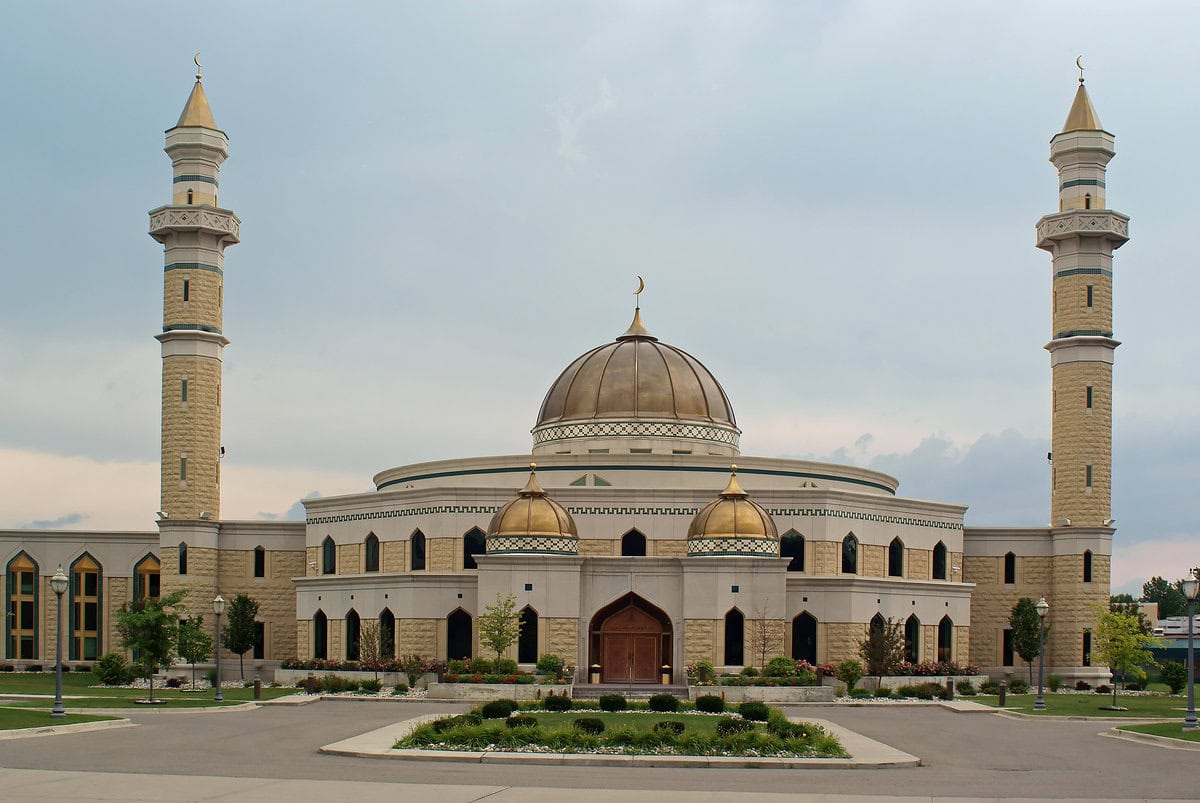Think you know Grand Rapids, Michigan?
Even if you've lived here your whole life, there's a good chance you've walked past a landmark without realizing the story behind it, or sipped water that made national history.
From a bright red sculpture that changed federal arts funding to a train that once circled above a downtown toy floor, and from salmon climbing city steps to a turbine that lit the streets in 1880, these aren't the usual local trivia.
Here are eleven true stories hiding in plain sight.
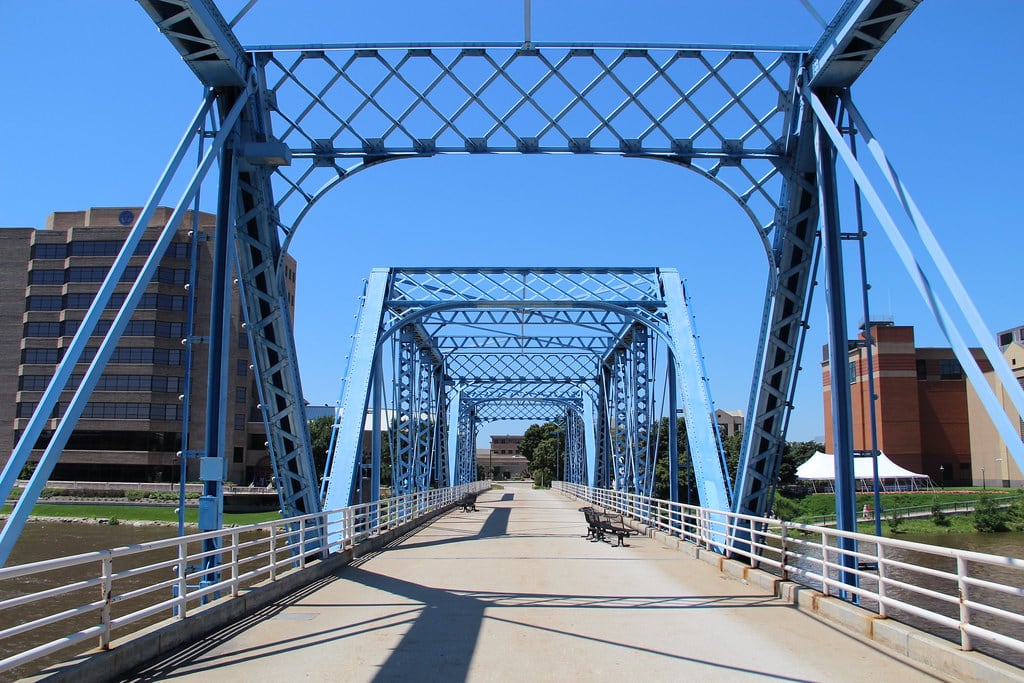
A red shape helped rewrite the rulebook for art on public land
In 1969, Alexander Calder's steel stabile La Grande Vitesse was dedicated on the civic plaza outside City Hall.
The commission followed a 1967 award from the National Endowment for the Arts' new Art in Public Places program, the first time the agency backed a work installed on city property.
Fabrication occurred in France; the 27 sections arrived by crate and were welded on site over several days.
The form stands about 43 feet tall by 54 feet long. Local donors matched the federal grant.
Over time, the city adopted a simplified outline of the sculpture on vehicles and stationery, making the silhouette part of daily signage.
At 4:00 p.m., a switch at the Monroe plant changed U.S. drinking water
On January 25, 1945, engineers at the Monroe Avenue Water Filtration Plant began adding sodium fluoride to Grand Rapids' water.
The city commission had voted the year before after discussions with researchers at the U.S. Public Health Service and the Michigan Department of Health.
The first dose was administered at 4:00 p.m. Tests then tracked children's cavities over time, comparing them with those in nearby cities.
The project became a model that many other systems followed. The plant stood on Monroe Avenue NW, serving the city's grid at the time.
Later, national guidance set an optimal level around 0.7 milligrams per liter.
The start in Grand Rapids remains a reference point in public health timelines.
A children's train once ran above shoppers' heads downtown
In 1949, the new Herpolsheimer's department store at Fulton and Division opened with a suspended children's monorail on its toy floor.
Branded Santa's Rocket Express during the holiday season, the three‑car ride circled the ceiling while parents shopped below.
The train later ran year‑round under neutral colors when the building operated as City Centre.
The Grand Rapids Public Museum received the train in 2000 and has since restored it to its 1950s look for seasonal display.
News releases and museum posts tie the debut to 1949 and show the restored cars in the Van Andel Museum Center, a short walk from the river.
A citywide art contest hands out six‑figure awards
ArtPrize launched in 2009 as an open, citywide exhibition with venues spread across downtown.
That first year, 1,262 artist entries showed in 159 locations, and voters awarded a $250,000 first prize from a $449,000 pool.
The event returns each fall and continues to combine public voting with juried awards.
Current materials state that more than $400,000 goes directly to artists each year, with additional grant funding set aside for projects.
The format turned the entire center city into a temporary gallery, and works have appeared in museums, storefronts, on bridges, and in the river.
Dates and award structures have shifted over time, but the core model remains the same.
Concrete steps let salmon climb past a downtown dam
On the Grand River's west bank, near the Sixth Street Dam, stands a concrete fish ladder completed in the mid‑1970s by artist Joseph Kinnebrew.
The stepped pools guide migrating fish past the drop created by the dam so they can reach the upstream habitat.
City records list the site as Fish Ladder Park, with an address at 624 Front Ave NW.
Archival photos from January 2, 1975, document an early public opening.
State tourism guides and local coverage describe the best viewing in spring and late summer when salmon and steelhead move upriver.
The structure also serves as a regular host site for art installations.
A museum that opened in 1981 now contains a presidential tomb
The Gerald R. Ford Presidential Museum was dedicated on September 18, 1981, in Grand Rapids, Michigan, under the administration of the National Archives and Records Administration.
The museum's triangular, two-story structure includes permanent exhibits on Gerald Ford's life, a replica of the Oval Office, and a gallery on Watergate.
On its grounds are the final resting places of President Gerald R. Ford and First Lady Betty Ford, located in a garden area open to visitors.
The museum stands on a six-acre site that fronts the Grand River and serves as a civic and commemorative space.
A 24-foot horse's hooves echo Leonardo's dream
At Frederik Meijer Gardens & Sculpture Park, you'll find The American Horse, a 24‑foot bronze sculpture created in 1999 by Nina Akamu.
It stands as a realized version of Leonardo da Vinci's unfinished equestrian design from the late 15th century.
Akamu studied Leonardo's sketches and crafted a new model based on his anatomical studies.
Thanks to patron Fred Meijer, a full-size cast of this majestic horse was placed at the Gardens, offering a rare glimpse of what da Vinci might have intended.
A bright blue river crossing once carried freight trains
Downtown's Blue Bridge began life as a Grand Rapids & Indiana Railroad crossing; the present truss dates to 1892, replacing earlier spans lost to river hazards.
The structure's four Pratt truss spans later fell out of rail use and were converted for walking in the 1980s.
Today, it links riverfront attractions and campuses on both banks.
Bridge historians rate it among Michigan's longest multi‑span metal truss examples still standing, and city archives document its railroad era and removal of track.
The paint scheme and lighting have changed through time, but the steelwork retains the lines of a 19th‑century railroad bridge adapted to foot traffic.
Sixteen arc lamps lit a showroom, and a factory turbine did the work
On July 24, 1880, the Grand Rapids Electric Light and Power Company used a water turbine at the Wolverine Chair and Furniture factory to drive a Brush dynamo.
The setup sent direct current to 16 Brush arc lamps along the west side, lighting storefronts and a hotel.
The turbine drew from the West Side Water Power Canal next to the plant.
This was an early U.S. use of hydropower for electric lighting, recorded by federal energy histories and local archives.
Two years later, Appleton, Wisconsin, opened a central hydro station.
The 1880 Grand Rapids installation remained a shop‑level system tied to a single industrial site.
A vintage carousel spins indoors all year
The Spillman Carousel at the Grand Rapids Public Museum was built in 1928 by the Spillman Engineering Company of North Tonawanda, New York.
It features 44 hand-carved horses and two chariots, all restored to their original colors.
The carousel was purchased in 1994 and installed in a pavilion with views of the Grand River, allowing operation regardless of weather.
Archival sources detail its earlier years at Lakewood Amusement Park in Muskegon before being acquired by the museum.
Today, it runs daily during museum hours, with a band organ providing music, continuing a ride tradition nearly a century old.
A minor league ballpark was built in 1994 and quickly broke attendance records
LMCU Ballpark in Comstock Park, just north of Grand Rapids, opened on April 12, 1994, as Old Kent Park.
Built entirely with private funds, the stadium became home to the West Michigan Whitecaps, a minor league baseball team.
Its initial capacity was 5,701 (expanded to 10,700 by 1997-1998).
The park set new Class A attendance records in its early seasons and continues to host baseball games and community events, including light shows and concerts.
The venue's name changed over time following sponsorships, becoming LMCU Ballpark in 2021.

